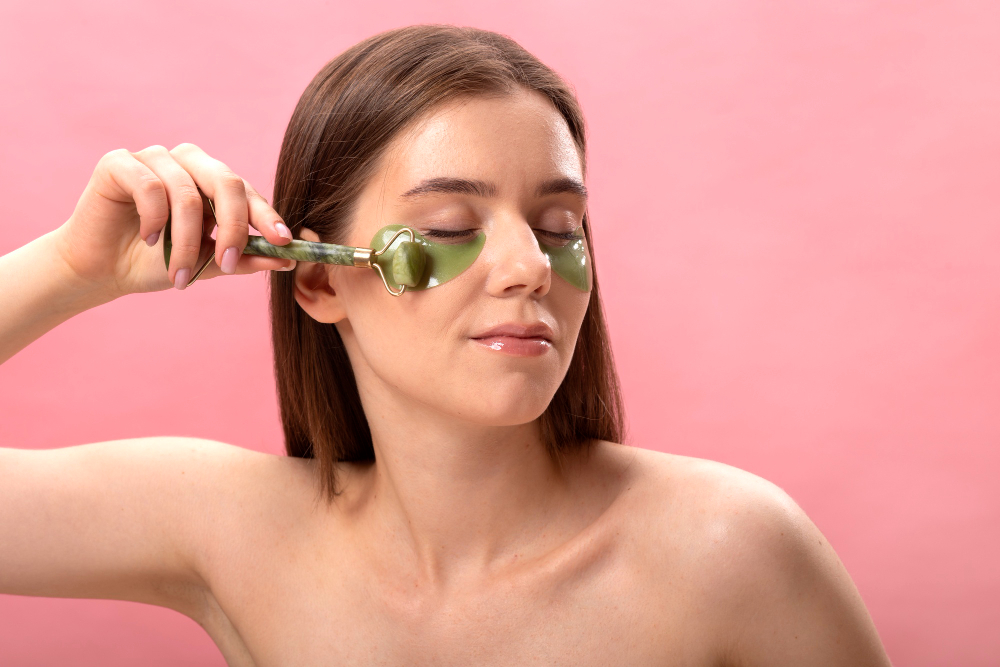The beauty industry is undergoing a significant transformation as consumers become increasingly aware of the impact their choices have on health and the environment. The rise of clean beauty is a reflection of this shift, emphasizing the use of natural ingredients and sustainable practices. In this blog, we’ll delve into what clean beauty revolution means, the importance of natural ingredients, the benefits of sustainable practices, and how to navigate this evolving landscape.
What is Clean Beauty?
Defining Clean Beauty
Clean beauty refers to cosmetic and personal care products that prioritize safety, transparency, and environmental responsibility. While there is no official regulatory definition, clean beauty generally includes products that are free from harmful chemicals, synthetic fragrances, and artificial additives. Instead, these products focus on using natural, plant-based ingredients that are both effective and safe for the skin, including those designed for facial contouring.
The Clean Beauty Movement
The clean beauty movement has gained momentum over the past decade, fueled by a growing awareness of the ingredients used in beauty products. Social media, celebrity endorsements, and consumer advocacy have played significant roles in educating the public about the potential dangers of certain chemicals commonly found in traditional beauty products. As a result, consumers are seeking alternatives that align with their values and health concerns.
The Importance of Natural Ingredients
What Are Natural Ingredients?
Natural ingredients are derived from plants, minerals, and other natural sources. They are minimally processed and often retain their beneficial properties, making them ideal for skincare and cosmetics. Common natural ingredients include:
- Botanical Oils: Such as jojoba, coconut, and argan oil, known for their moisturizing and nourishing properties.
- Plant Extracts: Ingredients like aloe vera, chamomile, and green tea, which offer soothing and antioxidant benefits.
- Clays and Minerals: Used for their cleansing and detoxifying properties in masks and scrubs.
Benefits of Using Natural Ingredients
- Safety: Natural ingredients tend to be gentler on the skin and less likely to cause irritation or allergic reactions compared to synthetic chemicals.
- Efficacy: Many natural ingredients are packed with vitamins, antioxidants, and other beneficial compounds that can enhance skin health and appearance.
- Sustainability: Sourcing natural ingredients from renewable resources supports sustainable practices and reduces the environmental impact of beauty products.
The Role of Sustainability in Clean Beauty
What Does Sustainability Mean in Beauty?
Sustainability in the beauty industry encompasses a wide range of practices aimed at reducing environmental impact. This includes sustainable sourcing of ingredients, eco-friendly packaging, and ethical manufacturing processes. The goal is to create products that not only benefit consumers but also protect the planet.
Key Aspects of Sustainable Beauty Practices
- Sourcing Ingredients Ethically: Brands are increasingly focusing on sourcing ingredients in a way that supports local communities, promotes biodiversity, and minimizes harm to the environment.
- Eco-Friendly Packaging: Sustainable brands are moving away from single-use plastics and opting for biodegradable, recyclable, or refillable packaging options.
- Reducing Carbon Footprint: Many clean beauty brands are committed to reducing their carbon footprint through sustainable manufacturing practices, such as using renewable energy sources and optimizing transportation logistics.
Also Read: Top Finnish Celebrities and Their Physical Transformations
The Benefits of Clean Beauty
1. Healthier Skin
Using clean beauty products can lead to healthier skin by minimizing exposure to potentially harmful chemicals. Ingredients found in conventional beauty products, such as parabens, sulfates, and synthetic fragrances, can disrupt hormonal balance and cause skin irritation. Clean beauty alternatives often use safer, gentler formulations that are better tolerated by most skin types.
2. Environmental Responsibility
By choosing clean beauty products, consumers are making a conscious decision to support brands that prioritize sustainability. This helps reduce the environmental impact of the beauty industry, which has been historically associated with pollution and waste. Supporting sustainable practices contributes to the preservation of natural resources and the protection of ecosystems.
3. Transparency and Trust
Clean beauty brands often emphasize transparency in their ingredient lists and sourcing practices. This transparency builds trust with consumers, who can feel confident about what they are putting on their skin. Many brands also provide information about their ethical practices and commitments to sustainability, further enhancing their credibility.
Navigating the Clean Beauty Landscape
How to Choose Clean Beauty Products
With the increasing popularity of clean beauty, it’s essential to know how to identify genuinely clean products. Here are some tips for navigating this landscape:
- Read Labels Carefully: Look for products that clearly list their ingredients and avoid vague terms like “fragrance” or “parfum,” which can hide harmful chemicals.
- Research Brands: Investigate the brand’s commitment to clean beauty. Look for certifications such as Leaping Bunny (cruelty-free), USDA Organic, or EcoCert, which indicate adherence to specific standards.
- Check for Transparency: Choose brands that provide detailed information about their sourcing, manufacturing practices, and the science behind their formulations.
- Beware of Greenwashing: Some brands may market themselves as “clean” or “natural” without making substantial changes to their formulations or practices. Be wary of vague claims and seek out reputable brands.
Building a Clean Beauty Routine
Transitioning to a clean beauty routine doesn’t have to be overwhelming. Here’s how to build one step by step:
- Start with Basics: Replace your everyday essentials—cleanser, moisturizer, and sunscreen—with clean alternatives. Focus on products that cater to your skin type and concerns.
- Explore New Brands: Don’t hesitate to try different brands to find products that work best for you. Look for samples or travel sizes to test before committing to full-sized products.
- Educate Yourself: Stay informed about new ingredients and trends in the clean beauty space. Follow blogs, podcasts, and social media accounts that focus on clean beauty to keep up with developments.
- Be Patient: Transitioning to clean beauty may take time, especially if your skin needs to adjust to new formulations. Give your skin a chance to acclimate and observe how it responds to the new products.
The Future of Clean Beauty
Innovations on the Horizon
The clean beauty movement continues to evolve, with innovations and trends emerging regularly. Here are a few areas to watch:
- Biotechnology: Advances in biotechnology are paving the way for more sustainable and effective natural ingredients. Brands are exploring lab-grown ingredients that mimic the properties of their natural counterparts without the environmental impact.
- Personalization: The rise of personalized beauty solutions is changing how consumers approach their skincare. Brands are beginning to offer customized formulations based on individual skin needs, utilizing natural ingredients tailored to specific concerns.
- Circular Economy: The concept of a circular economy in beauty is gaining traction, focusing on reducing waste through recycling and upcycling initiatives. Brands are finding innovative ways to repurpose ingredients and packaging, minimizing their environmental footprint.
Conclusion
The clean beauty revolution is more than just a trend; it represents a fundamental shift in how consumers think about beauty products and their impact on health and the environment. By embracing natural ingredients and sustainable practices, we can make informed choices that benefit not only our skin but also the planet. As the clean beauty landscape continues to grow, it’s essential to stay educated and support brands that align with our values.
By prioritizing clean beauty, we contribute to a healthier future for ourselves and generations to come. Whether you’re new to the movement or a seasoned advocate, every choice counts in creating a more sustainable and compassionate beauty industry. Join the clean beauty revolution and discover the power of nature for your skincare needs!
Also Read: How to Do Soundproof Insulation Your Office: A Guide to a Quieter Workplace



